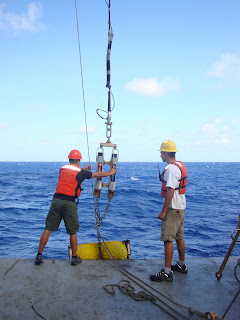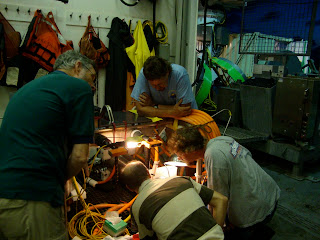Though the ACO cruise is over, the work on land is ongoing. I have taken a brief interlude from ACO to practice my Matlab plotting skills but will be returning to the ACO project in the coming weeks. With most of the instruments at the observatory supplying us with data, it is now time to supply the public with this data. A part of that supply line, I will become.
I will continue writing about the Aloha Cabled Observatory, but now in a less transient way. I will be writing for the website which will share the history and marvels of the project with anyone interested in reading. There will be three branches of the ACO website intended to focus the content for three different readerships – scientists looking for data, teachers looking for classroom material and generally curious minds looking for educational tidbits from the bottom of the ocean. The section for curious minds will be my department; explaining to them how the temperature sensors, camera and all that cable got down there will be my prerogative.
I’ll start with old material, from existing but unmaintained web pages, and develop a storyboard of possible page layouts – one page for each instrument, one page for the project’s history, one page explaining the oceanographic phenomena at Station Aloha. There will hopefully be video and still pictures involved from Jason and from the ACO eyeball. Once these ideas are approved, I’ll develop them into an actual website using my hard earned but minimal skills in web design software – Dreamweaver. I’ve never developed a webpage from flour and sugar and eggs. I’ve only ever started from Tollhouse prepackaged dough. I will be depending on my triumphs of the past in battles against menu bars in Dreamweaver to get me through the battles to come.

























































